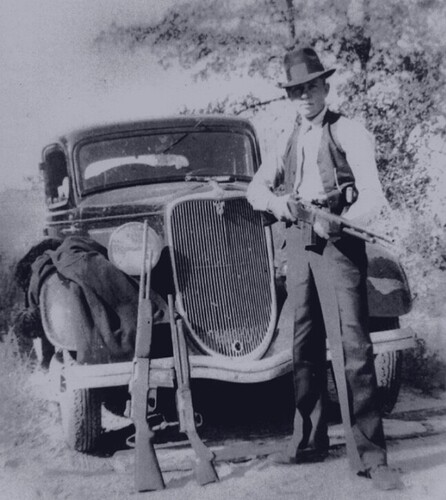Which was the best Section/Squad weapon, Bren or BAR
Bren:
The Bren Light Machine Gun was the standard light machine gun of the Second World War. Developed in the early 1930’s in an effort to replace the aging Lewis machine guns that the British Army relied on, the Bren actually had its origins in a Czech design designated as the ZB vz/26. The Czech ZB vz/26 was chambered to fire the Mauser 7.92mm rimless cartridge. As such, British authorities requested that the new light machine gun design be based around the 303 British rimmed-type cartridge.
This difference aside, the Bren Light Machine Gun was put into production shortly thereafter. The internal working components were kept simplified from the outset, making battlefield fixes and maintenance friendly. These qualities would lend the Bren to becoming a well-liked and respected weapon by front-operating infantrymen.
The Bren appeared in several Marks during it’s production lifetime. The Mark 1 appeared in August of 1938 and was most like the original Czech design. The Mark 2 appeared in 1941 and made the rear sight a more traditional leaf-type sight for British soldiers. Improvements to the bipod were also made and led to the development of the Mark 3 and Mark 4. The Mark 3 was a lighter derivative of the Mark 2 with the Mark 4 being a slightly different conversion model of the Mark 2 as well.
Post-war variations on the Bren system produced some changes to internal components such as the slide and cocking handle. The Bren would go on to live a long production life and see additional days in the form of the L4 series of light machine guns in service with the British Army. Many Bren Light Machine Guns would go on to be produced in Canada as well, including forms with a return to the 7.92 Mauser cartridge type. The L4A1 - L4A7 series of machine guns is based on the original Bren design and fires the NATO 7.62mm cartridge.
BAR:
The Browning Automatic Rifle, or BAR, was a direct result of machine gun and trench warfare found in the First World War. The intention was to fill the need for soldiers to have the firepower of a machine gun with the carrying capacity (and accuracy for that matter) of a portable combat rifle. The idea was actually presented by the French, and in 1917, John Browning set out to fulfill this idea. Thusly, the BAR was born and saw some service with combat forces towards the end of the war (1918).
The weapon was not a perfect breeding of the two concepts. For one, it was an extremely complicated design (at least internally), which made it an improbability for mass-production. The weapon also suffered from the fact that it was too heavy to be fired from the shoulder like a conventional rifle. On automatic firing mode, the weapon moved too much to provide much accuracy. The small magazine was also a drawback, containing just 20 rounds. In the end, the weapon system proved to be a mutt of the two concepts, fulfilling the role of neither one nor the other. The system used a gas-operated piston and cylinder along with .30-06 Springfield cartridge rounds in 20 round magazines.
None-the-less, the weapon system proved to have some advantages. Due to the internal complexity, it made for a very reliable weapon under battlefield conditions. It went on to become the standard light automatic weapon for the US infantry during the Second World War (as the M1918A2 in 1940) and was also provided to the British Home Guard in some numbers.
Early versions had a firing selector switch, allowing the weapon to be fired in single shots or in full automatic. Later versions did away with the single shot system and allowed for only two selection rates of fire - one for 350 rounds per minute and the other for 550 rounds per minute. The United States Marines preferred the former selector firing system so changes were made to accommodate that and, after a few other slight modifications, and the BAR proved itself on many fronts, often serving as a highly portable battlefield support weapon.
The BAR was dropped from service in the 1950’s and continued on in foreign armies throughout the 1970’s. Considering its beginning, it is amazing to see how the BAR evolved into a respected and reliable system throughout nearly half a century. The BAR did also see service in the Korean War. The modern M249 SAW fulfills the void that was left when the M1918A2 was removed from active service with the United States Army.







